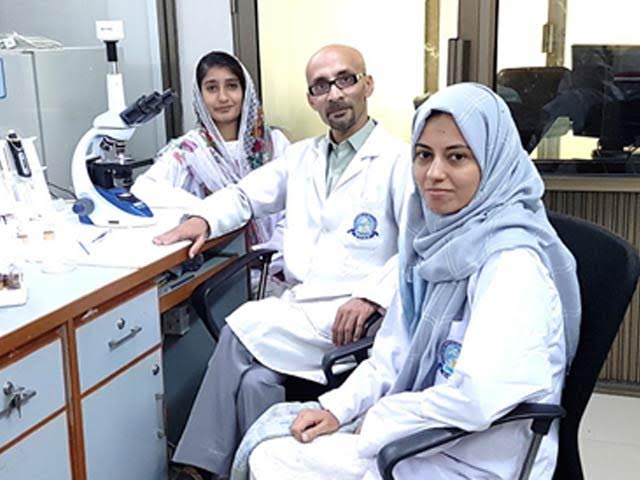
The team, led by Dr Mushtaq Hussain of the Dow Research Institute of Biotechnology and Biomedical Sciences, replicated the genetic disorder cyclopia in a fly from the Drosophila family, turning the insect into a mini model of the rare human abnormality.
Cyclopia occurs in one out of roughly 100,000 newborn infants and affects the development of the eyes, nose and mouth. Infants with the genetic disorder are born with a single or partially-divided eye and often show other developmental defects like the like of an opening for the nose or mouth.
The defect is always fatal and leads to still-births or death within hours of being born, making its study in humans extremely challenging.
Scientists have long suspected diabetes during pregnancy or exposure to certain toxins to be among factors that cause cyclopia in humans. At the molecular level, it is speculated that the disorder is caused by the faulty expression of certain proteins.
Dr Hussain and his team, comprising his postgraduate scholars Sanya Shabbir and Fozia Raza, hope the development of a viable cyclopia model in the common fruit fly (drosophila melanogaster) will help them and other researchers understand the genetic and physiological aspects of the rare birth defect.

A single such fly can be seen flying and crawling about inside a glass container in his lab. Closer inspection reveals the insect has only one eye on the centre of its head instead of two laterally placed ones that a normal specimen displays, a result of 11 generations of carefully planned breeding and continuous selection.
“If the mutant fly breeds further and produces a homozygous line – more flies with same genetic makeup – we will move to whole-genome sequencing and conduct further gene expression studies,” Dr Hussain said.
This means that scholars will draft the whole genome or each and every gene of the cyclopia-stricken fly and compare it to its normal counterpart to ascertain the genetic causes responsible for the abnormality. The mutant fly could also be used to study the biology of cyclopia at a higher resolution and help devise gene correction strategies for prevention or possible treatment of the disorder.
Drosophila flies share 75 per cent of the genes found in humans, making the species a viable model to study human ailments. More than 150 human diseases have been modelled on the fruit fly, most of them linked with genetic causes.
Just a few months back, geneticists from the University of Geneva Medical School (UNIGE) and the Liaquat University of Medical & Health Sciences Jamshoro analysed the genome of many Pakistani families with mutations in a gene called MARK3.
Scholars had earlier hypothesised that the abnormal MARK3 gene was responsible for shrinking eyeballs common in the families studied. The team carefully mutated the MARK3 gene in Drosophila flies and noticed shrinking of the insects’ eyeballs, confirming the hypothesis.
However, unlike many genetic ailments, a viable animal model of cyclopia has not been developed up till now.
While Pakistan has had several cases of cyclopia in newborns, an actual number of such births is unavailable due to the lack of any registry for these instances. “Birth defects are often considered a taboo in Pakistan and usually go unreported,” pointed out Dr Hussain. For now, his team has applied for an international patent on the procedure to replicate cyclopia in the fruit fly.

















COMMENTS (3)
Comments are moderated and generally will be posted if they are on-topic and not abusive.
For more information, please see our Comments FAQ